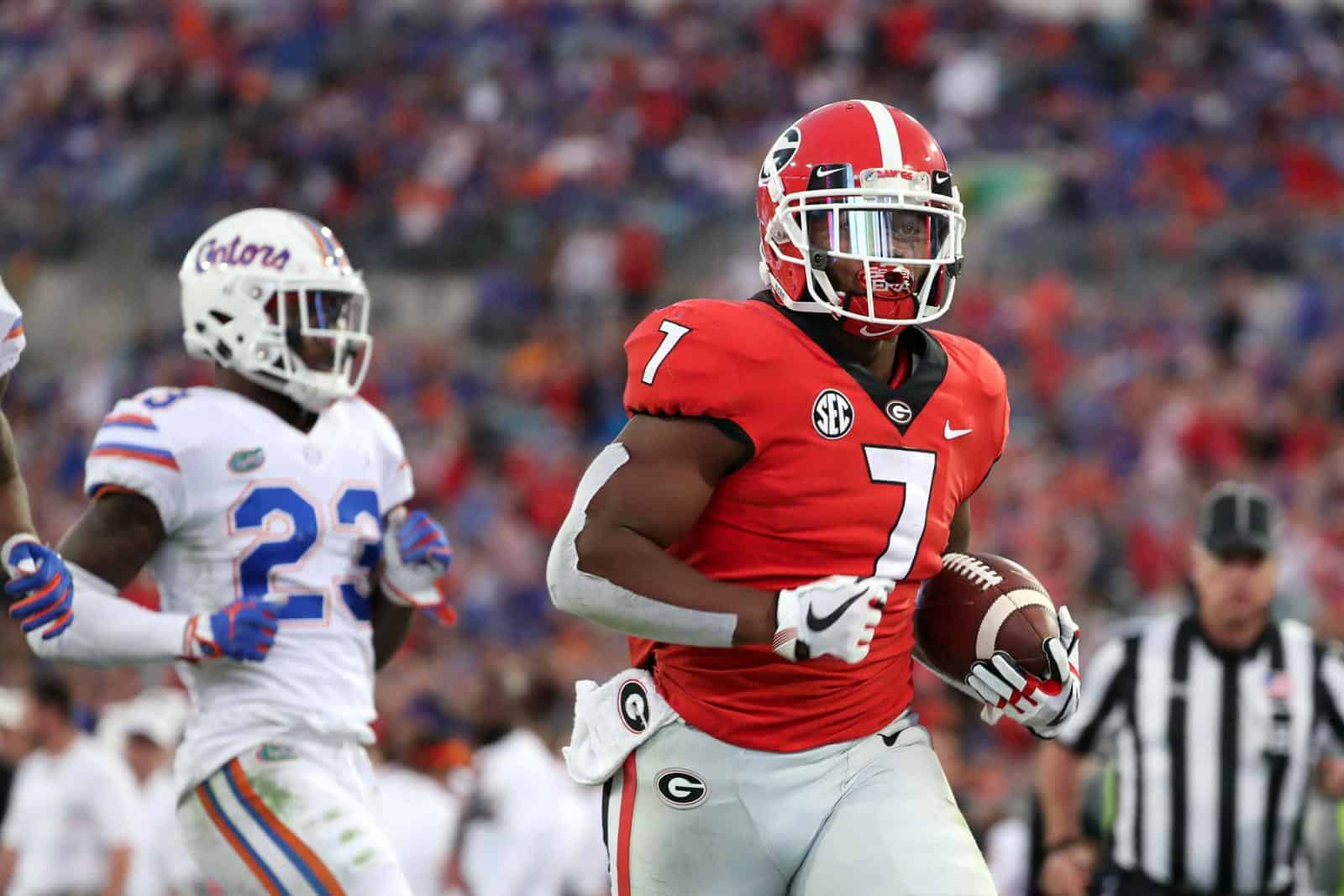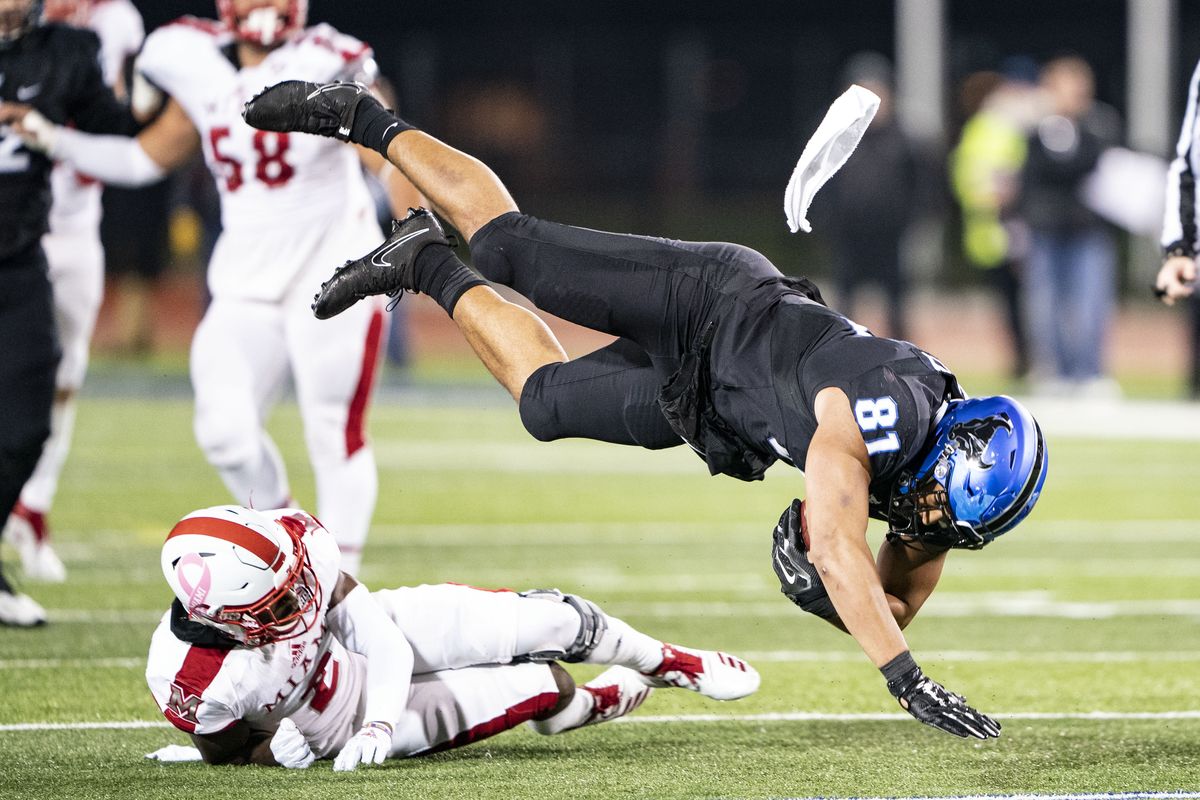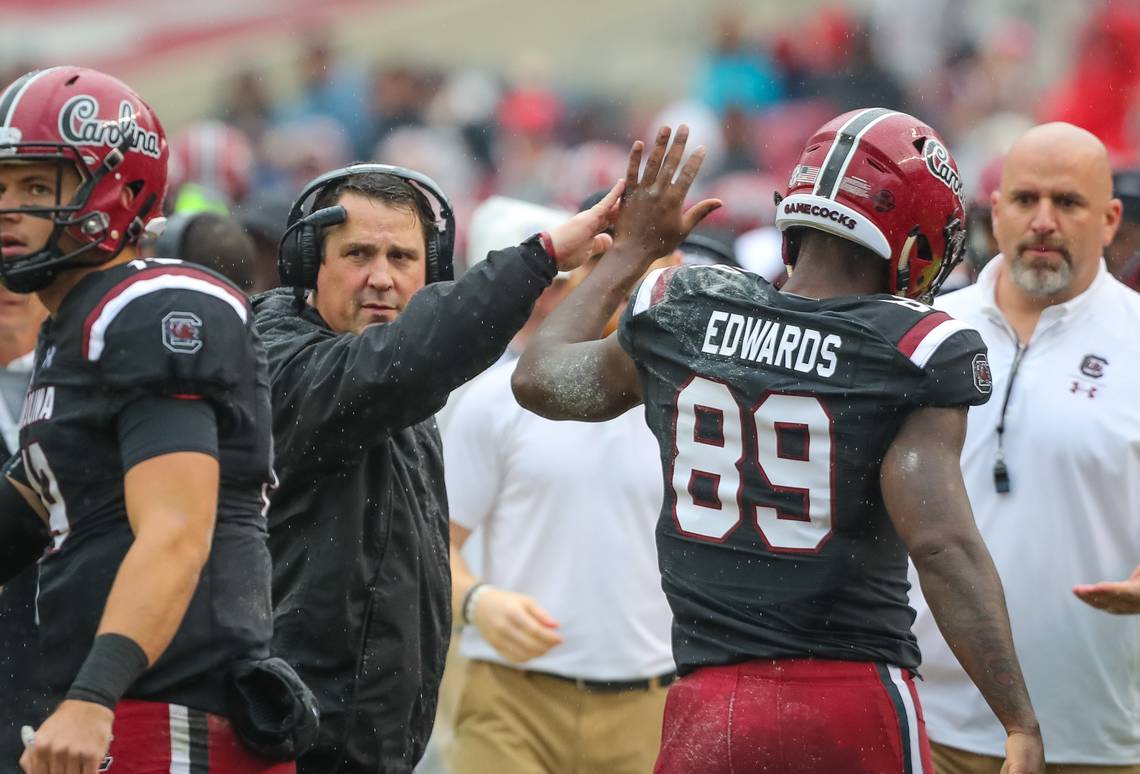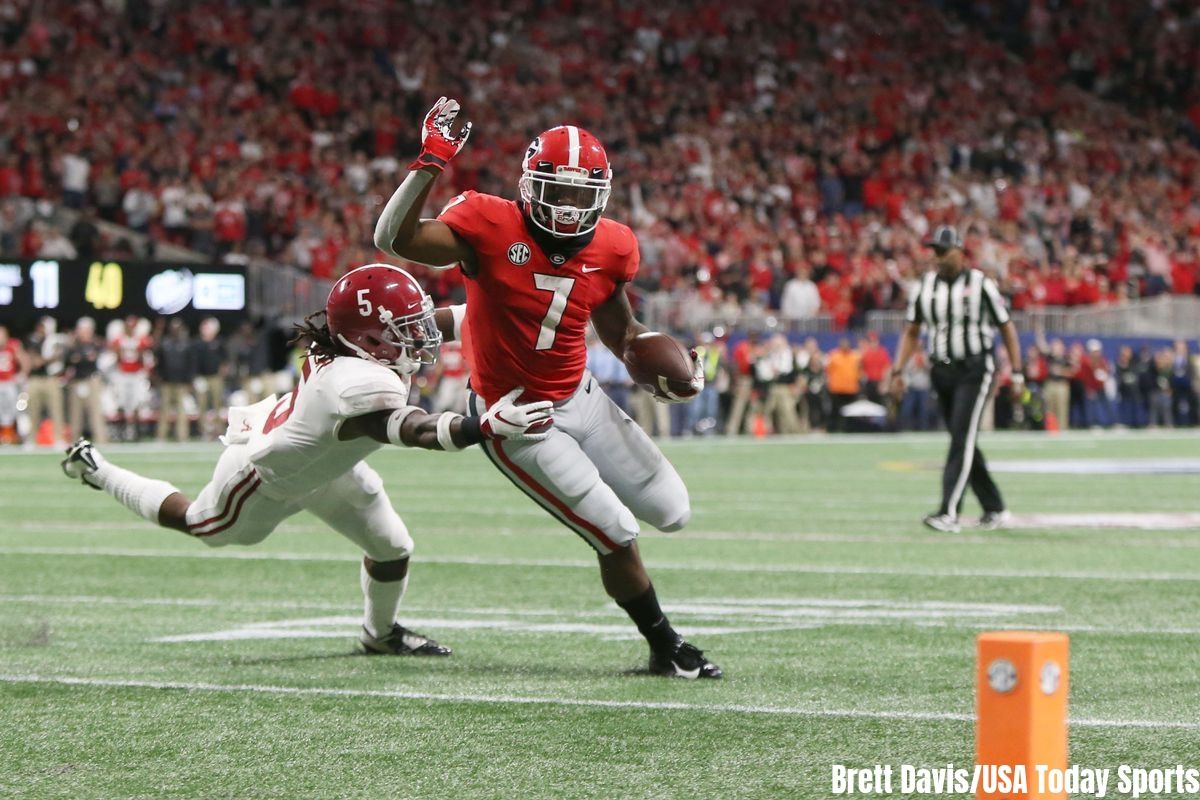If you are able to use a calendar, or have any sense of time, you will be aware of the fact that the 2020 NFL draft is a long, long way off in the future.
However, it’s always good to be prepared, and what’s more, with there being quite a lot of college football games, if you find yourself flicking between UT Chatanooga at Arkansas State and Colorado State at UMass, this article should hopefully help in picking a game where you have a chance of watching somebody who the Panthers might be looking at come March.
College Football kicks off this Saturday.
D’Andre Swift, RB (Georgia, Junior); 5’9 215lbs

Photo Credit: Kim Klemen/USA TODAY Sports
Christian McCaffrey is – and this might come as a shock – a very good running back. However, what he is not is immune from injury or wearing down, and the Panthers other running backs are either very unproven, a marked step down in terms of ability or are a poor fit for what the Panthers seem to be trying to do schematically. In fact, most of them tick a couple of those boxes. While the Panthers can probably afford to go into the 2019 season as heavily reliant on McCaffrey as they were in 2018, this isn’t something that is hugely sustainable. By adding another running back to pair with McCaffrey, the Panthers have a chance to get somebody who can take snaps away from McCaffrey, which should not only help to reduce the risk of injury – as well as the impact of any such injury – but also allow McCaffrey to play at 100% for 60% of the snaps, rather than 80% for 100% of the snaps.
In terms of finding a secondary running back to pair with McCaffrey there are really two options: 1) to find somebody whose skillset allows him to replicate what McCaffrey does or 2) somebody whose skillset compliments what McCaffrey does. When he spoke at the combine this past offseason, Ron Rivera made it clear that they would prefer to add a running back who can replicate a lot of what McCaffrey does in the passing game in particular, and while Scarlett and Bonnafon will likely both get chances to show they can be that for the rest of the preseason, there is a chance they are having the same conversation once again next offseason. In what is expected to be a very deep and strong running back class in 2020, next year’s draft looks to be an opportunity to get a good running back at a reasonable point in the draft, and while there are a number of ways the Panthers could go, the best of these options – at this point, at least – looks to be Georgia’s D’Andre Swift.
Whenever you can rack up over 1,300 yards of offense with 13 TDs on under 200 touches you’re doing pretty well, at any level of football, and Swift appears to be just the latest product of Georgia’s running back factory of recent years. As a runner, Swift gets up to speed quickly, reads running lanes well and is able to use changes of speed and direction to manipulate defenses to generate cut-back lanes and has the speed to take it to the house if he gets an open crease. While he isn’t going to flatten many head-on tacklers, he shows good contact balance to allow him to shrug off more indirect tacklers, keeps his legs churning to add extra yards through contact and is more than capable of making the occasional tackler miss in space. In many ways he is very similar to McCaffrey in this regard, though he doesn’t quite have the same start-up quickness but has more to offer in terms of dealing with contact. From a ball carrying point of view, he looks to be close enough to McCaffrey to replicate what he does in terms of the outside running game and gap-option plays but also can offer something slightly different in order to give the defense something else to cope with.
Of course, trying to find somebody who can replicate what McCaffrey does as a receiver is impossible, most actual receivers aren’t quite as effective as route runner as McCaffrey. However, while it would be foolish to suggest that Swift can fully replicate everything McCaffrey does, he has shown consistent flashes as a route runner while at Georgia and has good hands. Very few running backs come out of college having been asked to run actual routes, and while Swift has probably been pushed more than the vast majority in this regard, this is the area where he will likely need to improve the most in the NFL in order to maximize his potential value. The Panthers’ running back group will hopefully be a far more known entity as the team enters the regular season, but unless somebody clearly establishes themselves as the #2 behind McCaffrey there is likely to be some interest in a running back once again next offseason – and Swift makes as much sense as any back in college football when it comes to replicating what McCaffrey is asked to do for the Panthers.
Tyler Mabry, TE (Maryland, Senior); 6’3 265lbs

Photo Credit: Gregory Fisher/Icon Sportswire via Getty Images
The Panthers tight end group is caught in something of a middle ground at this point, with the established veteran Greg Olsen clearly towards the end of his career and the expected replacement Ian Thomas not quite at the level needed to establish himself as the clear first option. This is a similar situation to where the Panthers were at linebacker a few years ago, with Thomas Davis clearly working ever closer to retirement and Shaq Thompson needing game time to develop but not being quite ready to take over starting responsibilities. The added difficulty in all this is that it’s not clear when Olsen is likely to walk away, as he could retire this offseason or wait until his contract is up – a lot of which will likely come down to health – and so as they start to build scouting reports for next offseason, the Panthers will have to prepare for both a situation where their need at tight end is limited to possibly replacing Manhertz as the primary blocking tight end as well as the one where they need to find a complement to Ian Thomas who can develop into a legitimate #2 TE. Tyler Mabry is unusual in that he can potentially fill either role, dependent, of course, on how his draft stock develops between now and the draft.
In terms of replacing Manhertz, Mabry is first and foremost a very good blocker. He has the power to move linebackers and smaller defensive ends in the running game and does so using consistently good pad level and hand placement, meaning he can operate effectively in both a zone and power running scheme. He was used extensively as a pass protector last season at Buffalo – he is a graduate transfer at Maryland – but the skills he showed as a run blocker as well as the foot speed demonstrated as receiver mean there is no reason why he shouldn’t be expected to have as much chance of developing in this regard as any tight end coming out of college.
Of course, for a team to want to replace Manhertz, they would have to think they are making an improvement, and while Mabry has more potential as a blocker it’s hard to argue he’d make a massive improvement in this regard over Manhertz from day one. However, the way in which he should be able to add to what Manhertz has shown in the past is as a receiver. It would be unfair to say that Mabry is an amazing receiver, but he is at least a competent one. He has very good hands and has some ability to compete for the ball in the air, and while he – like most skill position players coming out of college – needs some development as a route runner, he shows a decent change of direction and speed, allowing him to create underneath separation on curls and the like. His college production is far from spectacular, having recorded 51 receptions for 472 yards and three touchdowns over the past two seasons, but a move to Maryland could lead to more targets and therefore more production, so judging his draft value at this point is quite difficult.
As things stand right now, Mabry is expected to be a late-round draft pick, and as such, he offers good value as somebody who can come in and be good at a role from day one with the potential to develop into a more complete player with time. If Olsen does retire and the Panthers feel that they need to add a more complete tight end, they will likely have to spend more draft capital to do so, but as a short term #3 TE who can be a #2 TE with a year to develop then he makes a lot of sense, at least while his draft stock stay where it is.
Bryan Edwards, WR (South Carolina; Senior); 6’3 215lbs

Photo Credit: Tim Dominick
In DJ Moore, Curtis Samuel and Jarius Wright, the Panthers have a good and suitably young wide receiver trio going into the 2019 season. With that in mind, it would seem odd for the Panthers to be interested in adding yet another wide receiver next offseason, but there are two main reasons why this might be more of a need for the Panthers than there might seem at first glance. First, the Panthers have a distinct lack of height at wide receiver, and while there is absolutely nothing wrong with smaller wide receivers, when you only have smaller wide receivers it can create issues in the red zone where 50/50 balls begin to be more sensible options. The second reason why receiver might be more of a need than many think is that the only receivers under contract after the 2020 season are DJ Moore and Terry Godwin, and Godwin might not even make the roster this year. So what makes Edwards a sensible choice for the Panthers?
Well, for a start, if Edwards had declared for the 2019 draft, he would almost certainly have been my highest graded receiver. Above all, he is very good. From an athletic point of view, he has enough deep speed to create vertical separation even if he is unlikely to run in the 4.3s at the combine, and uses his larger frame to create separation at the catch point. Against press, he is able to use his size to work through heavier contact and uses his hands and feet well in combination to work off the line effectively. As with almost all college receivers he can develop further as a route runner, but he shows a highly promising to change direction at speed and work well to separate at the head of routes. He has excellent hands and, importantly for the Panthers, shows a remarkable vertical ability, allowing him to dominate even bigger cornerbacks in the air and makes him a menace in the red zone. He is also unusually dangerous after the catch for a bigger receiver, showing a sharp change of direction as well as the strength to add yards through contact.
Of course, given all of this, Edwards is likely to be higher up draft boards than the Panthers would ideally like, but probably not as high as his play should merit. What’s more, having had to split targets with Deebo Samuel for his college career this point, there should be a reasonable expectation that Edwards will be able to improve on his already-impressive 55 catches for 846 yards and seven touchdowns from a year ago, something that is only likely to move his draft stock even higher. Edwards would be something of a luxury for the Panthers, and the viability of that luxury will likely depend on a lot of things that have nothing to do with the wide receiver room, but the more weapons you have, the easier it is for each individual player, and having a 6’3 receiver who can take advantage of solo coverages would only make things easier for Moore, Samuel and McCaffrey.
Draft stocks often change considerably over the course of a season and draft buildup, and it is worth keeping an eye on Edwards – if his stock slips into the late second day or even the high third day (where some analysts have him currently), this would be an excellent addition for any team, but would be a sensible complement to the pieces the Panthers have in particular. It’s always nice to dream, and at least with Edwards, this is a dream that isn’t beyond the realm of possibility.
Up Next: Two Big Guys To Catch Your Eye



